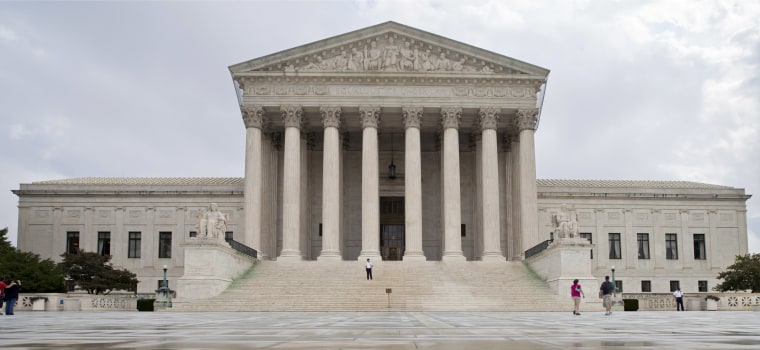Let me finish tonight with a reminder that the partisan paralysis we talk about all the time doesn't apply to every branch of our government; that big and important and controversial things still do get done in Washington.
We remember the 2000 election as the race that was decided by the Supreme Court, but the real significance is that it decided who would be on the court.
With that 5-4 ruling in December 2000, the Supreme Court made George W. Bush president over Al Gore. And that put Bush in position to get reelected in 2004. And when that happened, it meant that he (a Republican) and not Gore (a Democrat) got to pick the replacements when Chief Justice William Rehnquist passed away and when Sandra Day O'Connor announced her retirement from the court in 2005.
If Gore or any other Democrat had been in the White House when that happened, it would have upended the balance of the court. He would have appointed two liberal-leaning justices, thereby shifting the balance of power from the right to the left.
But Bush was president, and he picked John Roberts to replace Rehnquist and Sam Alito to take O'Connor's place. If anything, he moved the court that had handed him the presidency even farther to the right: Alito is a more reliable conservative vote than O'Connor was, and Roberts is at least as conservative as Rehnquist.
Bush has been retired for five years now and he made those picks almost nine years ago, but Roberts is only 59 years old and Alito is 64. Since the court has lifetime tenure, they could each be there for another 20, 25, or 30 years.
And as long as they're there, they're probably going to be voting like they did on the Hobby Lobby case, or on the other big ruling today, which eliminated the ability public employee unions to collect dues from nonmembers.
We hear a lot about Washington being gridlocked, but that's because of divided government. The White House is controlled by Democrats and the House is controlled by Republicans who don't want to cooperate with the White House on pretty much anything. So no one really gets their way. Nothing ever happens.
But now think of the Supreme Court. Gridlock isn't the rule there. Gridlock can never be the rule there. The court has nine seats--an odd number. So every time they vote, one side wins and one side loses. And what the court say goes. The court is the final arbiter on what's allowed under our Constitution and what isn't.
This is a conservative court right now. Four of the justices are clearly on the right and another one, Anthony Kennedy, isn't quite as conservative...but he's still pretty conservative.
And this conservative court is the exception to the rule about Washington being paralyzed and doing nothing. There's not much that comes out of Congress for President Obama to sign, but there's a lot that comes out of this court.
It's tempting, I know, to throw up our hands and just tune out all of the exhausting partisan noise in Washington. But remember this: four of the nine justices who now sit on the Supreme Court are more than 70 years old. The chances are good that there will be at least one vacancy in the next few years.
And when that vacancy comes, it will matter very much who is sitting in the White House and what the make-up of the Senate is. That's the real significance of today's rulings. They're a powerful reminder that even if the rest of Washington shuts itself down, there's one branch of government that will always keep plowing ahead.
